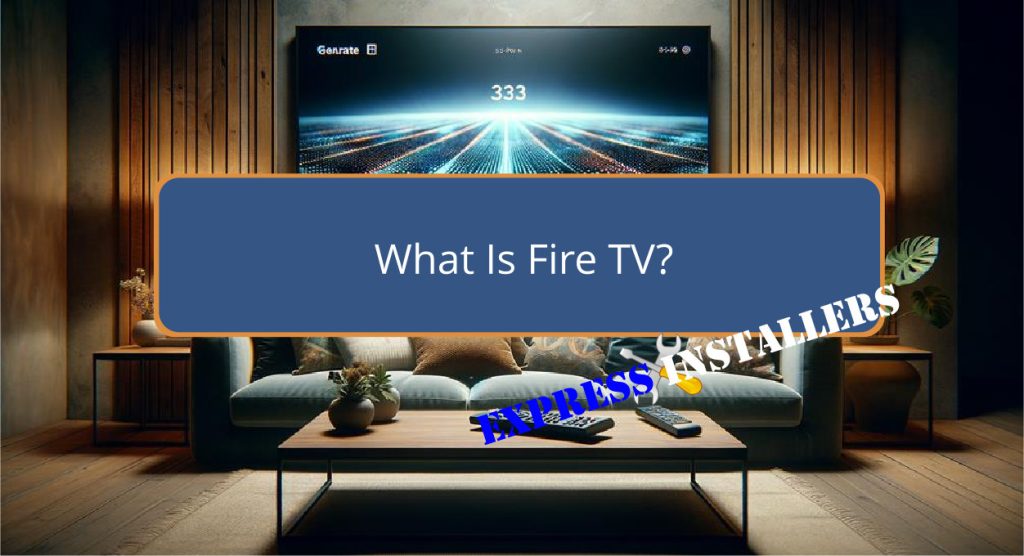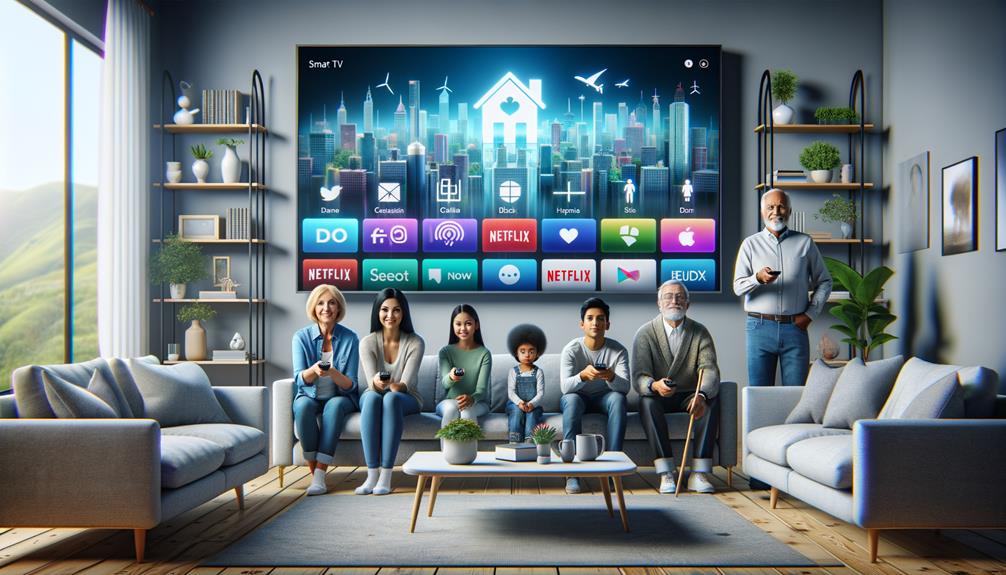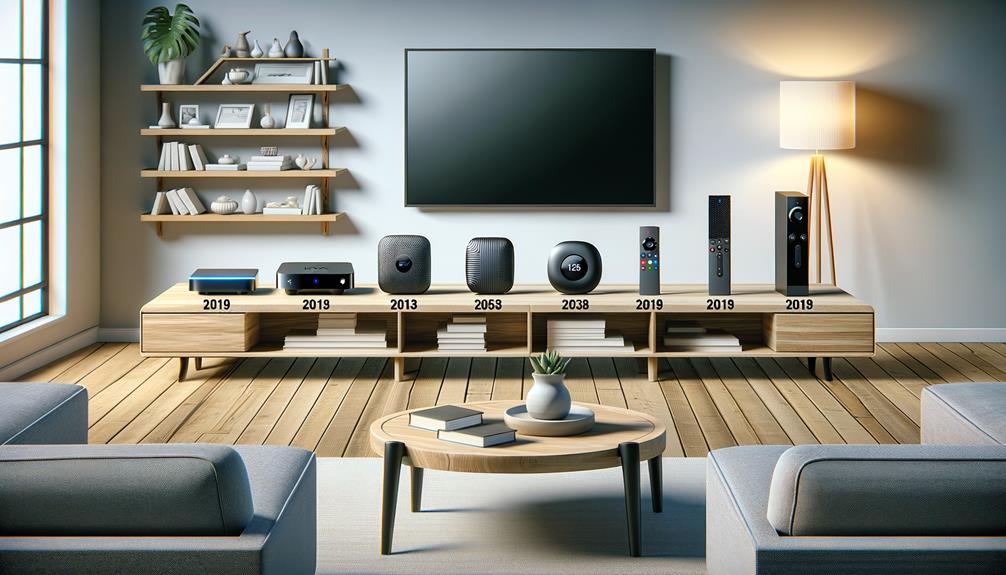
Fire TV, launched by Amazon in 2014, is a series of digital media players designed to stream audio and video content to high-definition televisions.
It supports popular services including Netflix, Hulu, and Amazon Prime Video through a user-friendly interface that receives regular software updates.
The product line includes various devices like the Fire TV Cube, equipped with Alexa and HDMI-CEC control, and the portable Fire TV Stick.
Operating on Fire OS, a customised version of Android, Fire TV offers advanced streaming capabilities and voice control features.
Different models cater to varying user preferences and budgets, offering a tailored entertainment experience through smart technology integration.
Quick Summary
- Fire TV is a line of digital media players developed by Amazon, launched in 2014.
- It enables streaming of audio and video content to HD TVs using popular services like Netflix and Amazon Prime Video.
- Devices range from the portable Fire TV Stick to the more advanced Fire TV Cube with voice control via Alexa.
- Fire TV operates on Fire OS, a customised version of Android designed for easy navigation and enhanced user experience.
- The platform supports over 1.5 million movies and TV episodes, offering a comprehensive entertainment solution.
Understanding Fire TV
Launched in 2014, Fire TV is Amazon’s proprietary line of digital media players designed to stream audio and video content directly to high-definition televisions.
Fire TV offers a wide array of streaming options, supporting numerous popular services like Netflix, Hulu, and Amazon Prime Video, thereby providing users with extensive content choices.
The platform’s user interface is particularly user-friendly, featuring a clean layout that facilitates easy navigation and quick access to content.
Regular software updates enhance this interface by introducing new functions and improving existing ones, ensuring an adaptive and responsive user experience.
These updates also help in maintaining security standards and adding the latest streaming protocols, which are important for a seamless entertainment experience.
Types of Fire TV Devices
Amazon offers a variety of Fire TV devices, each designed to cater to different user needs and preferences in streaming technology.
Particularly, the Fire TV Cube blends advanced streaming capabilities with integrated Alexa functionality, allowing for voice control and HDMI-CEC support.
This enables users to control other connected devices, enhancing the user experience to a great extent.
The Fire TV Edition, on the other hand, provides benefits such as direct integration into smart TVs, offering a seamless interface that combines live TV and streaming services without the need for additional hardware.
| Device Type | Key Features |
|---|---|
| Fire TV Cube | Built-in Alexa, HDMI-CEC control |
| Fire TV Edition | Integrated smart TV, seamless interface |
| Fire TV Stick | Portable, easy access to streaming |
This range guarantees a tailored viewing experience, catering to diverse preferences and setups.
Fire TV Operating System

Fire TV operates on Fire OS, a customised version of Android specifically designed to enhance the functionality and user experience of Amazon’s streaming devices.
This operating system is pivotal in streamlining the interface design, making it intuitive and accessible for users to navigate through various services and applications.
The integration of voice control capabilities with Fire OS has greatly enriched the user interaction, allowing for effortless voice commands to search, play, and manage content.
Continuously updated to support the latest streaming protocols and features, Fire OS guarantees that Fire TV remains competitive and adaptable to the evolving digital landscape.
This seamless operation and compatibility underscore Fire TV’s commitment to providing a thorough and user-centric entertainment experience.
Fire TV Stick Features
Equipped with a voice-enabled Alexa remote, the Fire TV Stick offers users a seamless and interactive way to access a vast library of over 1.5 million movies and TV episodes through various streaming platforms like Netflix, YouTube, and Spotify.
The integration of Alexa enhances user experience by enabling efficient voice search capabilities.
This feature allows viewers to find their desired content with simple voice commands, greatly streamlining the content selection process.
As a compact streaming media player that connects directly to the HDMI port of a television, the Fire TV Stick stands out as an affordable solution for diverse entertainment options, making it a valuable tool for both avid media consumers and casual viewers looking to enhance their TV-watching experience.
Comparing Fire TV Models

Among the various models available, the Fire TV Stick, Fire TV Stick 4K, Fire TV Stick Lite, and Fire TV Cube each offer unique features tailored to different preferences and budgets.
Comparison charts highlight the distinctions in resolution, performance, and user interface, allowing potential buyers to make informed choices based on technical specifications and price points.
User reviews often emphasise the real-world applications of each model:
- Emotionally resonant: ‘The Fire TV Cube’s hands-free Alexa integration makes it feel like the future is here.’
- Practicality: ‘Fire TV Stick Lite’s affordability makes premium streaming accessible to everyone.’
- Performance-driven: ‘The 4K resolution of the Fire TV Stick 4K transforms movie nights into cinematic experiences.’
These insights help shape consumer expectations and decision-making processes.
Fire TV App Development
In addition, thorough Fire TV also offers a robust platform for app development, enabling creators to build custom applications tailored to enhance viewer engagement.
Utilising the Fire OS, developers can employ a variety of programming languages such as Java, Python, and HTML5, making it versatile for different types of content creation including streaming services, games, and interactive experiences.
The development tools provided by Amazon include detailed documentation and support, facilitating the design of applications that are both engaging and functional.
Furthermore, developers have the opportunity to monetise their applications through various channels like in-app purchases, subscriptions, or advertisements, thereby creating a potential revenue stream while maximising user engagement on the Fire TV platform.
Market Trends in Streaming

The streaming device market, projected to reach $89.48 billion by 2026, is experiencing significant growth due to increasing consumer demand for digital entertainment.
This surge is largely fuelled by the evolving preferences of consumers, who are increasingly turning to streaming services for a diverse array of content options.
- Diverse Content: Over 18,000 apps across various genres like movies, sports, and news cater to the eclectic tastes of modern viewers.
- Technological Accessibility: Platforms like Muvi One streamline the creation of custom Fire TV apps, enhancing content accessibility and variety.
- Global Reach: The sale of over 150 million Fire TV units underscores a widespread consumer shift towards advanced streaming solutions, reflecting a global trend in digital entertainment consumption.
Purchasing and Setup Tips
With the global market for streaming devices flourishing, understanding how to select and set up a Fire TV Stick is key for consumers looking to enhance their viewing experience.
When purchasing, consider the device’s compatibility with your TV‘s resolution and your specific usage habits.
Always buy from reputable sources like the official Amazon website or authorised dealers to guarantee authenticity and access to customer support.
Installation involves connecting the device to your TV and power source, followed by on-screen instructions to link your Amazon account and adjust settings.
Regular software updates are essential for peak performance and access to new features.
For troubleshooting, consult the detailed online support or use the provided guide to resolve common issues efficiently.
Frequently Asked Questions
Is There a Monthly Fee for Fire TV?
No monthly fee is required for the Fire TV device. Subscription comparisons reveal additional costs may arise from services like Netflix or Hulu, and extra content that necessitates separate payments or subscriptions.
What Is the Difference Between a Smart TV and a Fire TV?
The difference between a smart TV and Fire TV lies mainly in connectivity options and user interface differences. Fire TV offers enhanced streaming capabilities and a more dynamic interface compared to most smart TVs.
Is Fire TV Free to Use?
Fire TV requires purchasing a device, with initial setup costs. Subsequent access to certain content is free, but premium services necessitate additional fees. Device compatibility varies, affecting overall user experience and available features.
What Channels Do You Get With a Fire TV?
Fire TV provides extensive channel customisation, offering access to streaming services like Netflix, Hulu, and ESPN, enhancing user experience with superior streaming quality across diverse genres including sports, news, and international content.
Conclusion
To sum up, Fire TV stands out as a significant player in the streaming landscape, offering a variety of devices tailored to diverse user needs.
Its operating system provides a robust platform for app development, enhancing the streaming experience.
Market trends indicate a growing inclination towards such integrated streaming solutions. Consumers considering Fire TV should evaluate different models based on features and performance.
Effective setup and informed purchasing can maximise the utility and satisfaction derived from these devices in an increasingly digital entertainment environment.
